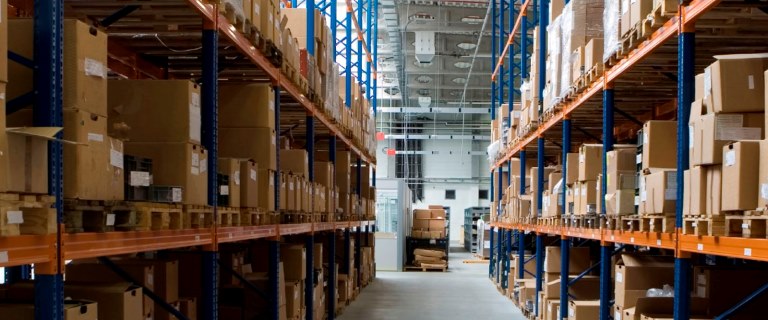The U.S. is at the cusp of a manufacturing supercycle that could reshape the global investment landscape and greatly impact the real estate industry.
This manufacturing resurgence gained momentum with the “America first” emphasis and 2018 tariffs on Chinese goods. The Biden administration continued restricting capital inflows to China, which further encouraged bringing supply chains to the U.S. This drive is bolstered by legislative acts that provide nearly $2 trillion in domestic investment and incentives: the U.S. Inflation Reduction Act for clean energy, the $280 billion CHIPS and Science Act for semiconductor production and the $1 trillion Infrastructure Investment and Jobs Act for sustainable infrastructure.
Consequently, U.S. manufacturing construction outlays have surged to $196.1 billion as of July. The government’s initiatives to bolster domestic manufacturing have unleashed a wave of investment that could reshape supply chains during the next decade and create a significant tailwind for the real estate sector.
Manufacturing Supercycle And Regional Beneficiaries
From my perspective, the American South could be a primary beneficiary of manufacturing investments. Texas, in particular, has received a disproportionate share of investment, with firms such as Samsung, Texas Instruments (paywall) and Tesla already commencing expansion plans that are expected to create thousands of new jobs during the coming years.
The Laredo, Texas, border gateway is a primary point for goods shipments coming to the U.S., with a reported 37% of truck container crossings and 46% of rail containers entering in 2021 through that corridor. Additionally, Laredo registered a 12% year-over-year increase in commerce in 2023. From my view, this heavy traffic has helped increase the demand for industrial space in the central Texas corridor, including San Antonio and Austin.
Xebec, a developer focused on industrial properties, revealed plans for a “3,300-acre logistics and manufacturing center” on a 32,000-acre site northeast of Austin, according to the Dallas Morning News. This development is one example of many seeking to fill the demand for industrial and residential space near multi-billion-dollar projects like Samsung’s chip factory in Taylor and Tesla’s Gigafactory. The impact of these developments will be felt across the Austin-San Antonio corridor and could generate significant economic output and position the region as a hub for advanced manufacturing and technology.
Florida is also poised to benefit from a surge in advanced manufacturing investment. With the NeoCity district positioning Orlando as one of the top cities for STEM talent in the U.S., the state’s prospects are promising.
Moreover, it is expected the region will see a substantial economic boost from several major infrastructure and technology projects currently underway. Among these is Brightline‘s high-speed rail initiative, which links cities like Miami and West Palm Beach to Orlando. This connectivity will enhance commuter access to the Orlando market, catalyzing growth in central Florida. A press release by the company said the rail project generated 10,000 new jobs during its construction phase. Given the current growth trajectory, Florida’s population is estimated to rise by 3.2 million by 2030, according to the Florida Apartment Association. To accommodate this surge, the state will require over 570,000 new housing units, the FAA also said.
Elsewhere in the south, companies like Toyota, Hyundai, BMW and Albemarle are investing billions of dollars in what’s been called the new “Battery Belt.” The auto manufacturing industry has expanded from the traditional markets in the Midwest, which could lead to the creation of tens of thousands of jobs in states like Georgia, Tennessee and North and South Carolina.
Beyond the U.S., Mexico stands to benefit from the regionalization of supply chains, given the existing United States-Mexico-Canada Agreement, proximity to U.S. population hubs, affordable labor and ample land.
What This Means For The Real Estate Sector
The manufacturing sector has one of the highest job multipliers, as a manufacturing plant typically fosters demand for suppliers, transportation services and maintenance providers. From my perspective, one of the ripple effects of the revival in domestic manufacturing will be an increased demand for residential real estate throughout the southern states with proximity to ports. Investments in clean energy, infrastructure and semiconductor production will stimulate large-scale job creation throughout these states, particularly in higher-wage sectors.
Based on data from the U.S. Bureau of Labor Statistics, the Dallas-Fort Worth metro is on a trajectory to add 150,000 to 200,000 jobs annually during the coming years, which would be an increase of roughly 4% per year and almost twice the pace of job creation before the pandemic. The conventional theory assumes that one new housing unit is needed for every 1.5 new jobs created. Permits authorized in 2022 for the DFW metro only amounted to about 76,000, creating an annual deficit of roughly 23,000 to 56,000 housing units. This comes at a time when the U.S. already faces a nationwide housing shortage and underscores the need to develop new housing units to meet excess demand.
As the nation intensifies its commitment to domestic manufacturing and the states in the Southeast attract vast industrial and residential investments, there will be significant demand for new housing and industrial space that will not be met by current construction projections and permitted developments. It is important for policymakers, real estate developers and investors to focus on these areas of growth and plan ahead in order to avoid rapidly rising rents and housing costs.
Additionally, real estate developers and investors should consider how they can capitalize on the upcoming capital investment wave. Housing developments generally take two to four years to materialize from inception. Investors and developers should pay attention to the mentioned growth corridors. Additionally, it is critical that developers engage with local municipalities to stay informed on upcoming manufacturing and infrastructure investments to ensure there is sufficient housing available when these investments come to fruition.
Source: Forbes


